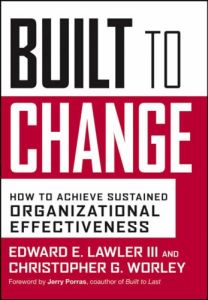
Built to Change
How to Achieve Sustained Organizational Effectiveness
Recommendation
This is a bold, fascinating and occasionally dangerous book, which getAbstract recommends to those who want to plan carefully and honestly for the future. Why "carefully" and "honestly?" Because authors Edward E. Lawler III and Christopher G. Worley are savvy enough to identify the kind of organization best suited for a business environment shaped by continuous change - and bold enough to prescribe the actions leaders must take to survive in this environment. These actions require care and honesty because they differ so fundamentally from many past business practices. For example, the idea of continually re-planning your market position sounds straightforward. However, to then eliminate all employees who have done great work, but whose skill base does not match the firm’s new portfolio, is risky and requires great faith in your vision. As the authors repeatedly note, the future is difficult to predict, and impossible to predict completely. What’s more, for individual managers to examine their organizations, see that they no longer fit and voluntarily step aside will require rigorous honesty and responsibility. They would need to have planned their careers and finances well enough that self-interest does not blind them. Many of this book’s ideas have a similar nature. They seem good and right, but applying them successfully will require great discipline.
Summary
About the Authors
Consultant Edward E. Lawler III teaches in USC’s Marshall School of Business and is the author of Treat People Right. He founded the university’s Center for Effective Organization, where Christopher G. Worley is a research scientist. Worley also wrote Integrated Systemic Change.
Learners who read this summary also read
Related Skills























Comment on this summary